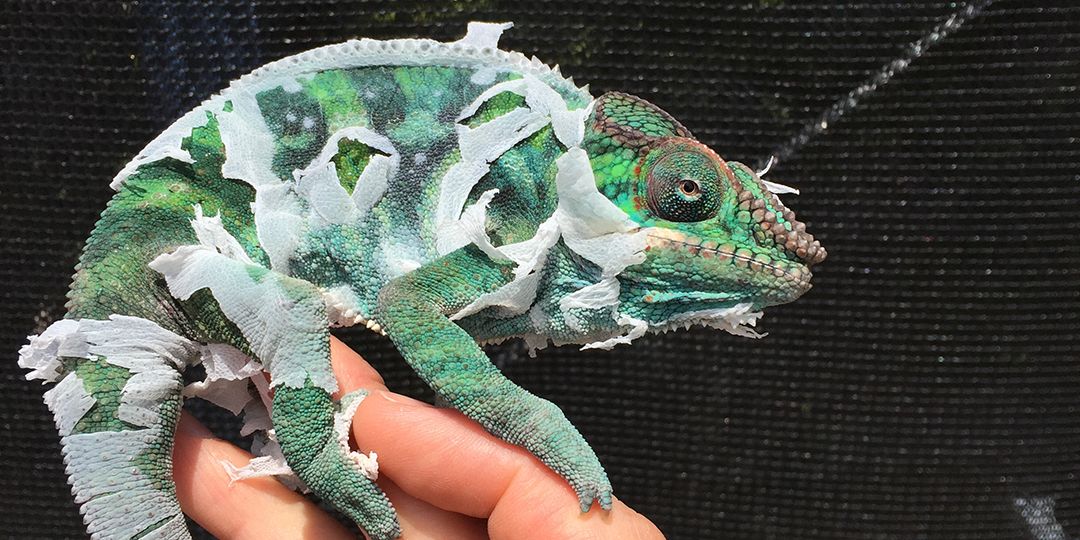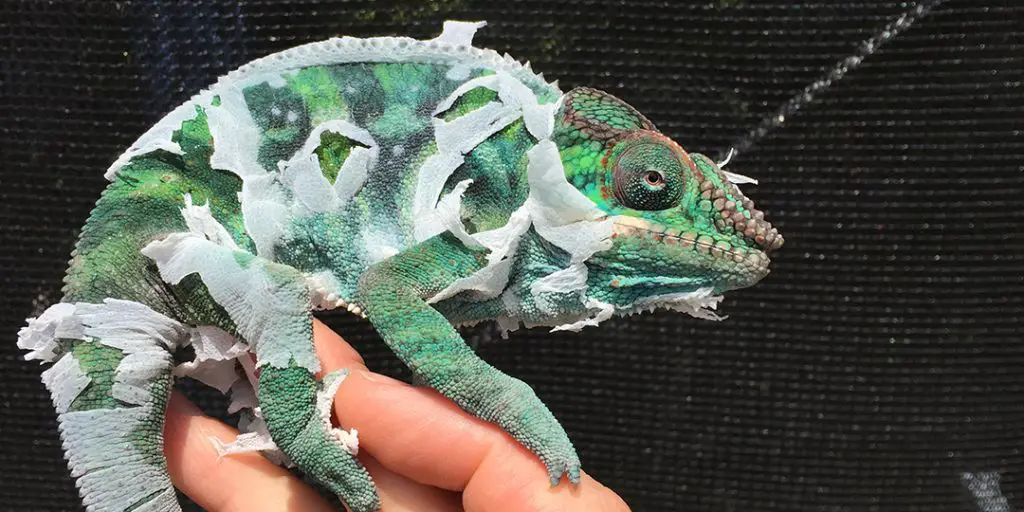Chameleons are fascinating creatures that are known for their ability to change colors. But, have you ever wondered if chameleons shed their skin like other reptiles? The answer is yes, and in fact, chameleons shed their skin quite frequently throughout their lifespan. Shedding skin is an essential process for chameleons as it helps them grow, get rid of parasites, and maintain their skin’s health and condition.
The shedding process of chameleons is a natural and necessary process for their survival. During this process, chameleons shed their outer layer of the skin, which is called the epidermis. Shedding begins at the head and progresses down to the tail, and it takes several days for the process to complete. So, if you own a chameleon or are planning to get one, it’s essential to know about their skin-shedding process and how to help them through it.

Do Chameleons Shed Skin?
Chameleons are fascinating creatures that can change their color and appearance to blend in with their surroundings. But what about shedding their skin? Do they go through the same process as other reptiles, or is it different? Let’s explore the fascinating world of chameleons and their skin shedding habits.
Chameleons and Skin Shedding
All reptiles, including chameleons, shed their skin regularly to keep it healthy and in good condition. Shedding allows them to get rid of old, damaged skin and replace it with new, fresh skin. Chameleons shed their skin in patches, rather than all at once, which is a unique trait compared to other reptiles.
The shedding process is controlled by hormones that trigger the chameleon’s skin cells to separate from the old skin layer. Once the old skin has separated, the chameleon rubs against branches or other objects to help remove the remaining skin. The process of shedding can take anywhere from a few days to a couple of weeks, depending on the chameleon’s age and health.
Benefits of Shedding
Shedding is an essential process for chameleons as it helps them maintain healthy skin and prevent infections. Shedding also allows them to grow and replace damaged skin cells. If chameleons did not shed their skin, it could cause a build-up of dead skin cells, which could lead to skin infections and other health problems.
Another benefit of shedding is that it allows chameleons to change their appearance. Shedding can remove any parasites or dirt on their skin, which can affect their color-changing abilities. By shedding, chameleons can showcase their vibrant and beautiful colors to attract mates or deter predators.
Challenges with Shedding
Shedding can be a challenging process for chameleons, especially if they are not healthy. If a chameleon has poor nutrition, dehydration, or skin infections, shedding can become difficult and uncomfortable. In some cases, a chameleon may struggle to shed their skin, leading to skin damage, infections, and other health issues.
Another challenge with shedding is that chameleons may become stressed during the process. Stress can occur if the chameleon is in an unfamiliar environment or if they are handled too much during shedding. Stress can also lead to health issues, such as a weakened immune system or a lack of appetite.
Chameleons vs. Other Reptiles
Chameleons have a unique shedding process compared to other reptiles. Unlike snakes or lizards, which shed their skin in one piece, chameleons shed their skin in patches. This is because chameleons have a different skin structure, with several layers of skin that need to be shed to promote healthy skin growth.
Another difference between chameleons and other reptiles is the frequency of shedding. Chameleons shed their skin less frequently than other reptiles, as they do not need to grow as quickly. Also, chameleons shed their skin in patches, rather than all at once, which is a unique trait compared to other reptiles.
Conclusion
Chameleons are fascinating creatures with unique skin shedding habits. Shedding is an essential process for chameleons, as it helps them maintain healthy skin and change their appearance. However, shedding can also be a challenging process for chameleons, especially if they are not healthy or become stressed. By understanding the shedding process, we can better care for chameleons and ensure they live healthy and happy lives.
Frequently Asked Questions
Chameleons are fascinating creatures known for their unique ability to change color. But do they shed their skin? Here are five commonly asked questions about chameleons shedding their skin:
1. Do chameleons shed their skin like snakes?
Yes, chameleons do shed their skin periodically, just like snakes. However, unlike snakes, chameleons do not shed their skin in one piece. Instead, their skin flakes off in small pieces, similar to how humans shed skin cells.
During the shedding process, chameleons may appear dull and discolored, and their skin may look dry or flaky. It is important to provide proper humidity and hydration for your chameleon during this time to ensure a successful shed.
2. How often do chameleons shed their skin?
The frequency of chameleon skin shedding depends on their age and size. Younger chameleons shed more frequently than adults, with some shedding every few weeks. Adult chameleons shed less frequently, typically every few months.
It is important to monitor your chameleon’s shedding frequency to ensure they are shedding properly and staying healthy.
3. Can shedding be a sign of illness in chameleons?
Yes, irregular shedding can be a sign of illness in chameleons. If your chameleon is not shedding properly or is shedding too frequently, it may indicate a health issue such as dehydration or a vitamin deficiency.
Other signs of illness in chameleons include lethargy, loss of appetite, and changes in behavior. If you suspect your chameleon is ill, it is important to seek veterinary care.
4. How can I help my chameleon during shedding?
To help your chameleon during shedding, you can provide a humid environment and a water source for them to soak in. This will help keep their skin hydrated and promote a successful shed.
You can also mist their enclosure with water to increase humidity levels. Avoid handling your chameleon during shedding, as their skin may be sensitive and easily damaged.
5. What should I do with my chameleon’s shed skin?
Chameleon skin sheds are harmless and can be disposed of in the trash. However, some people choose to keep their chameleon’s shed skin as a unique souvenir or for educational purposes.
If you choose to keep your chameleon’s shed skin, be sure to clean and dry it thoroughly before storing it in a safe place.
What to do if your chameleon is shedding
In conclusion, chameleons do indeed shed their skin! This process is crucial for their growth and health, as it allows them to discard any damaged or old skin and replace it with fresh, new skin.
While shedding may occur more frequently in younger chameleons, adult chameleons will still shed periodically throughout their lives. It is important for owners to monitor their chameleons during shedding to ensure that the process is going smoothly and that they are not experiencing any complications.
Overall, understanding the shedding process is an important aspect of caring for a chameleon. By providing proper care and attention, you can help ensure that your chameleon stays healthy and happy for years to come!

